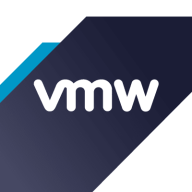


Find out what your peers are saying about Cisco, Hewlett Packard Enterprise, Fortinet and others in Network Management Applications.
They are now back to do that with the remainder of their company, so they've realized the value in 12 months and are willing to invest in the remainder of their organization.
The deployment time with VMware VeloCloud SD-WAN saves 50 percent compared to traditional MPLS networks.
The principal third-level support is very good.
I would consider Cisco support a 10 out of 10.
I would rate Cisco's support, their customer service, and technical support as excellent.
They were always helpful.
Our technicians have a good support experience from the company.
The technical support from VMware NSX deserves a rating of seven out of ten.
I appreciate having dedicated service engineers who manage our account and ensure any technical issues are addressed efficiently.
Cisco SD-WAN is highly scalable and can be expanded to more than 10,000 sites.
The ease of configuration and features like zero-touch provisioning enhance the scalability of Cisco SD-WAN, especially in disaster recovery situations.
There is a high level of satisfaction with its ability to scale.
The customer base for VMware VeloCloud SD-WAN has been growing 30 to 40 percent per year when transitioning from traditional MPLS networks.
While some software-related issues and bugs were encountered, they did not cause the whole environment to crash.
For stability, I would rate VMware NSX as a nine out of ten.
The technical team from VMware VeloCloud SD-WAN addresses these issues promptly, making us very happy with their support.
Overall, VMware VeloCloud SD-WAN is a stable solution.
Now, they change frequently, making it difficult to obtain long-term support.
Including more features like integrating with Splunk for monitoring vulnerabilities would help eliminate the need for other SOC solutions.
The negative, or the downside of Cisco is the knowledge base; you need to be a little bit more tech-savvy and network-savvy to work with Cisco, while Juniper is a lot more user-friendly from what I can see, especially in terms of configuration and any kind of roll back.
The initial configuration and integration within our existing environment were not easy.
The pricing for the product is another area for improvement as I'm not satisfied nowadays.
The licensing model is expensive and could be more flexible, especially after Broadcom bought VMware.
I would like to see improved security features, such as adding more SASE functions.
Unlike the comprehensive reports we receive from Palo Alto for our firewalls, VMware VeloCloud SD-WAN doesn't offer detailed reports that effectively convey the solution's benefits to management.
Its pricing is justifiable due to the comprehensive solution it offers.
It is also relatively cost-effective for smaller businesses when using the Meraki version.
The pricing of Cisco Catalyst SD-WAN is rated between eight and nine out of ten, where ten is the most expensive.
The cost of VMware NSX is considered high.
VMware NSX is a little higher in price compared to the competition.
There is room for improvement in terms of pricing.
The pricing is high, making the margin thin, which limits mark-up opportunities from the wholesale price.
The pricing involves licensing for the VeloCloud gateway based on the bandwidth used.
It also provides robust security features, including port security, analysis, mirroring, and multiple other security solutions.
Cisco Catalyst SD-WAN has integrated security features which include base firewall, URL filtering, IPS, and secure segmentation.
Integration capabilities provide comprehensive security.
Micro-segmentation enhances security and provides more secure data in your data center.
The most powerful feature of VMware NSX is the micro-segmentation that allows us to separate the different protocols our application works with.
I value the ability to dynamically configure our network on the fly using VMware NSX.
Its proprietary Dynamic Multipath Optimization (DMP) technology is regarded as the most powerful and valuable function by VMware VeloCloud SD-WAN.
Previously, organizations used MPLS links for 1 MB at around $200, but now they can use 4G or 5G SIM cards for half that price while achieving more bandwidth.
VMware VeloCloud SD-WAN has truly transformed our environment, providing significantly more bandwidth at lower costs, which is essential for tasks like Teams calls.
| Product | Market Share (%) |
|---|---|
| Cisco Catalyst SD-WAN | 2.6% |
| Cisco DNA Center | 22.1% |
| Cisco Catalyst Center | 9.5% |
| Other | 65.8% |
| Product | Market Share (%) |
|---|---|
| VMware NSX | 40.9% |
| Cisco ACI | 45.3% |
| Cisco Enterprise Network Functions Virtualization | 3.5% |
| Other | 10.300000000000011% |
| Product | Market Share (%) |
|---|---|
| VMware VeloCloud SD-WAN | 9.8% |
| Fortinet FortiGate | 18.6% |
| Cisco Catalyst SD-WAN | 14.9% |
| Other | 56.699999999999996% |



| Company Size | Count |
|---|---|
| Small Business | 44 |
| Midsize Enterprise | 15 |
| Large Enterprise | 42 |
| Company Size | Count |
|---|---|
| Small Business | 33 |
| Midsize Enterprise | 23 |
| Large Enterprise | 68 |
| Company Size | Count |
|---|---|
| Small Business | 22 |
| Midsize Enterprise | 14 |
| Large Enterprise | 20 |
Cisco Catalyst SD-WAN offers centralized management and integrates seamlessly with existing Cisco ecosystems. It simplifies deployment with zero-touch provisioning, delivering robust security and optimized application routing.
Cisco Catalyst SD-WAN provides essential capabilities for organizations seeking secure remote connectivity and cost reduction, notably through its support of hybrid environments. While pricing and complexity present challenges, its advanced application control and cloud compatibility make it a valuable asset for connecting branches and data centers. Users benefit from enhanced security, network assurance, and simplified management, driving operational efficiency.
What are the key features of Cisco Catalyst SD-WAN?In banking, retail, and enterprise sectors, Cisco Catalyst SD-WAN facilitates effective network management by enhancing connectivity between branches and data centers. Its security features and zero-touch deployment are particularly valued, providing scalable solutions for locations that demand reliable, application-prioritized networking.
VMware NSX is a sophisticated solution utilized for micro-segmentation, network security, software-defined networking, and private cloud construction. It aids in the transition from physical to virtual infrastructure, ensuring efficient network virtualization and security of production workloads.
VMware NSX empowers organizations to manage network functions, implement distributed firewalls, and enhance security within virtual environments. Crucial for disaster recovery and load balancing, it supports cloud-native application development and enterprise clients. Its ease of use, scalability, and seamless integration with existing VMware solutions ensure streamlined network management and swift deployment. Despite its extensive features, areas like pricing, routing functionality, and compatibility with certain platforms require attention.
What are the key features of VMware NSX?VMware NSX is widely implemented across industries such as finance, healthcare, and manufacturing. Organizations in these sectors utilize it to bolster security, enhance network efficiency, and support cloud-native applications. By extending on-premise networks into provider spaces and managing virtual access networks, VMware NSX significantly optimizes infrastructure operations.
VMware Software-Defined Wide Area Network (SD-WAN) is a secure access service edge (SASE) platform that combines many types of software-based network technologies in an attempt to enable users to virtualize their wide area networks and reduce their reliance on hardware. In essence, this solution makes it possible for users to reliably access their applications from anywhere in the world by leveraging cloud technologies. Users can simply, efficiently, and completely control their network devices and traffic. It ensures that organizations are always able to use the best possible connection to their data centers. VMware SD-WAN steers traffic so that it is always using the most reliable connections and at the same time takes steps to remediate any problems that it detects in other network links. This guarantees that organizations can access high-priority applications at all times.
VMware SD-WAN Benefits
Some of the ways that organizations can benefit by deploying VMware SD-WAN include:
VMware SD-WAN Features
Reviews from Real Users
VMware SD-WAN is a solution that stands out when compared to many of its competitors. Two major advantages it offers are its ability to automate the process of creating and maintaining a virtual local area network and its intuitive user dashboard.
Sami I., principal cloud architect at Loihe, writes, “One of the solution's most valuable features is the VMware core automation stack at an SDDC. It includes NSX, the VMware virtualization layer for the networks (the LAN virtualization), which works extremely well with the VMware SD-WAN solution and is the primary advantage over all the others. None of the other vendors could integrate with the virtual LAN, making it quite complicated and virtualized to be fully automated.”
Chih S., senior technical consultant at a tech services company, says, “The product has a very good user dashboard that is simple to navigate.”